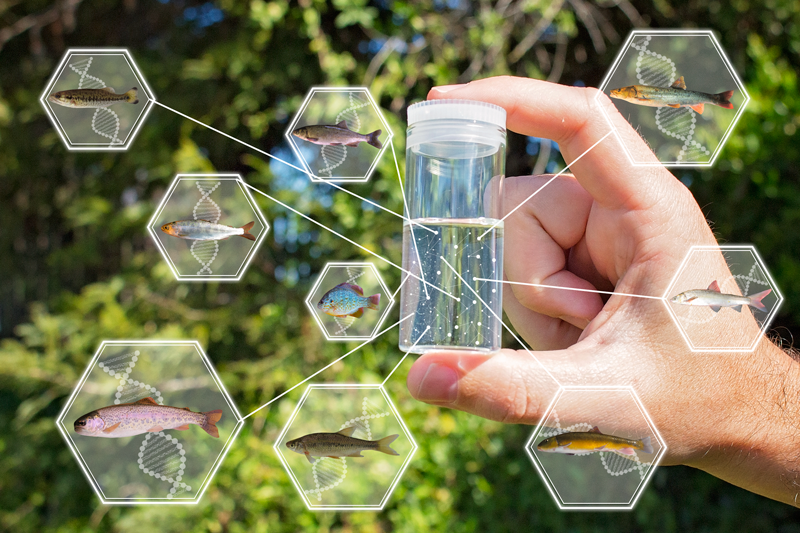
Environmental DNA (eDNA) is a method for surveying species based on traces of genetic material left in the environment via skin, hair, scales, or waste. The technique is growing in popularity for fisheries research because it can detect rare or highly endangered species that are difficult to sample using traditional capture techniques. Surveys using eDNA can be used to map the distribution of rare species, provide early detection of invasive species, sample species richness, and map biodiversity. Field sampling involves the relatively simple collection of water samples, which are filtered to concentrate any genetic material. Filters are then transported to a laboratory where the collected genetic material can be analyzed.
In order to detect species from a sample, the DNA fragments need to be selectively amplified (or multiplied) through a process called polymerase chain reaction (PCR) to increase the chances of detecting particular fragments of interest. Scientists can either investigate the presence of a particular species in a sample, or compare amplified DNA to a reference database of genetic sequences to describe the species composition of a sample. FISHBIO collects and filters water samples that are sent to partner institutions for eDNA analysis. We have used this technique to survey for threatened fish species such as steelhead (Onchorhynchus mykiss) in North America, and have explored the use of eDNA surveys in Southeast Asia’s Mekong Basin.
